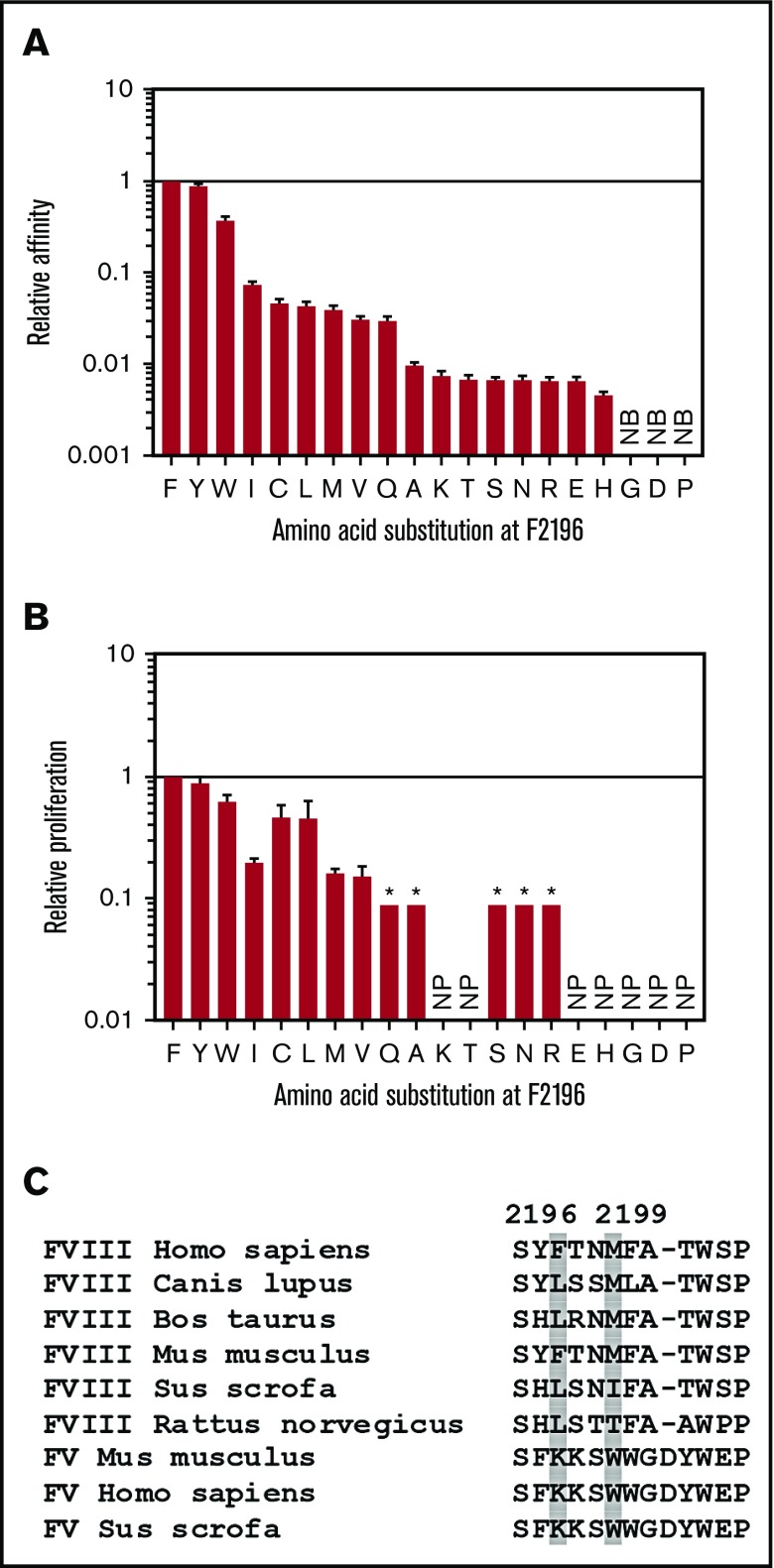Figure 4.
Effects of all possible amino acid substitutions at FVIII-F2196 on DRB1*01:01 binding and CD4+T-cell proliferation, and homologous/orthologous residues to human FVIII anchor residues F2196 and M2199. (A) All 19 non-Phe amino acids were substituted into FVIII2194-2205 at position F2196. Peptides were tested for binding to rDRB1*01:01 by a competition assay measuring displacement of the DRB1*01:01 reference peptide HA306-318. Binding of the F2196C-substituted peptide was tested with 10 mM β-mercaptoethanol in the binding buffer as described.72 Results are expressed as relative binding affinities (IC50 of FVIII2194-2205/IC50 of the indicated substituted peptide) ± SE. The IC50 of FVIII2194-2205 was 0.34 ± 0.02 μM. (B) Peptides were also tested for presentation on irradiated DRB1*01:01 PBMCs to the T-cell clone 32A-18 by measuring [3H]thymidine incorporation. Results are expressed as relative T-cell proliferation (EC50 of FVIII2194-2205/EC50 of the indicated substituted peptide) ± SE. The EC50 of FVIII2194-2205 in the proliferation assay was 8.9 ± 0.7 μM. The asterisk (*) indicates that, for those peptides, the relative proliferation was <0.09. (C) FVIII and FV protein sequences aligning with human FVIII residues 2194-2205 from different mammalian species were collected from the NCBI reference sequence database including FVIII Homo sapiens, NP_000123.1; FVIII Canis lupus familiaris, NP_001003212.1; FVIII Bos taurus, NP_001138980.1; FVIII Mus musculus, NP_032003.2; FVIII Sus scrofa, NP_999332.1; FVIII Rattus norvegicus, NP_899160.1; FV M musculus, NP_032002.1; FV H sapiens, NP_000121.2; and FV S scrofa, NP_999285.1. Amino acids homologous/orthologous to anchor residues FVIII-F2196 and M2199 are highlighted with gray shading. NB, no detectable binding at 50 μM peptide; NP, no detectable proliferation even at the highest peptide concentration, 100 μM.

